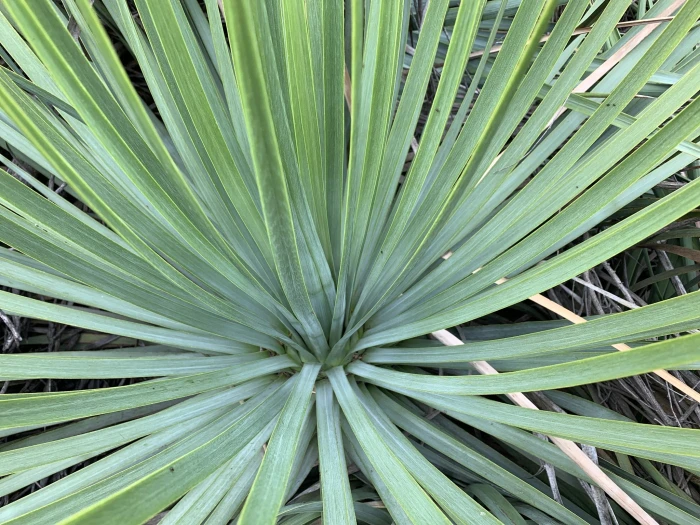Chaparral Yucca
(Hesperoyucca whipplei)
Chaparral Yucca (Hesperoyucca whipplei)
/
/

Krista Maxwell
Public Domain























































































Estimated Native Range
Climate Requirements for San Angelo, Texas
| This Plant | Your Site | Plant Suitability for Your Location | ||
|---|---|---|---|---|
| • Precipitation | 3" - 59" | 22" | Your precipitation may be too high for this plant. | Too high |
| • High Temp. | 66°F - 109°F | 96°F | Your summer temperatures are normal for this plant. | Excellent |
| • Low Temp. | 10°F - 49°F | 31°F | Your winter temperatures are normal for this plant | Excellent |
Summary
Chaparral Yucca is valued for its striking architectural form, drought tolerance, and low maintenance requirements, making it an excellent choice for xeriscaping and native plant gardens in Southern California. It is also used for erosion control on slopes. The plant’s ability to regenerate after wildfires is a testament to its resilience. In cultivation, it requires full sun exposure and can tolerate a range of soil types, including clay, as long as they have good drainage. While it is extremely drought-tolerant, occasional deep watering can promote healthier growth. It is important to note that while Hesperoyucca whipplei is easy to grow within its native range, it may be challenging to cultivate in other regions due to its specific climate preferences.CC BY-SA 4.0
Plant Description
- Plant Type: Succulent
- Height: 3-9 feet
- Width: 5-6 feet
- Growth Rate: Slow
- Flower Color: Cream, White
- Flowering Season: Spring, Summer
- Leaf Retention: Evergreen
Growth Requirements
- Sun: Full Sun
- Water: Very Low, Low
- Drainage: Fast
Common Uses
Bird Garden, Butterfly Garden, Deer Resistant, Drought Tolerant, Edible*Disclaimer: Easyscape's listed plant edibility is for informational use. Always verify the safety and proper identification of any plant before consumption., Fire Resistant, Fragrant, Hummingbird Garden, Low Maintenance, Rock Garden, Salt Tolerant, Showy Flowers
Natural Habitat
Native to chaparral, coastal sage scrub, and oak woodlands in California and Baja California, Mexico
Other Names
Common Names: Our Lord’s Candle , Spanish Bayonet , Quixote Yucca , Foothill Yucca
Scientific Names: Yucca whipplei , Hesperoyucca whipplei , Yucca peninsularis , Yucca whipplei var. whipplei , Hesperoyucca peninsularis , Yucca whipplei subsp. eremica , Yucca whipplei var. caespitosa , Yucca whipplei var. percursa , Yucca whipplei var. parishii , Yucca whipplei subsp. parishii
GBIF Accepted Name: Hesperoyucca whipplei (Torr.) Trel.